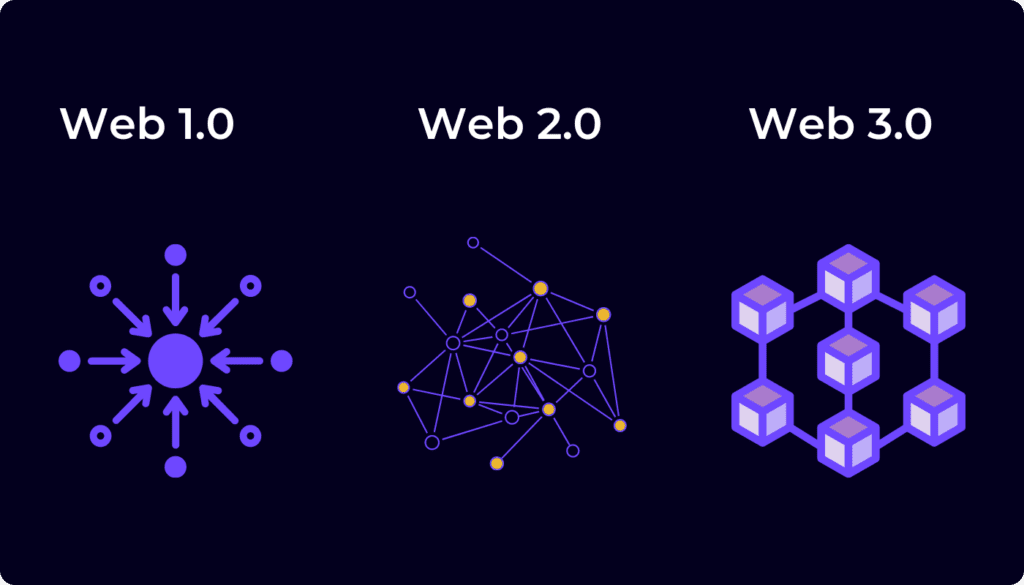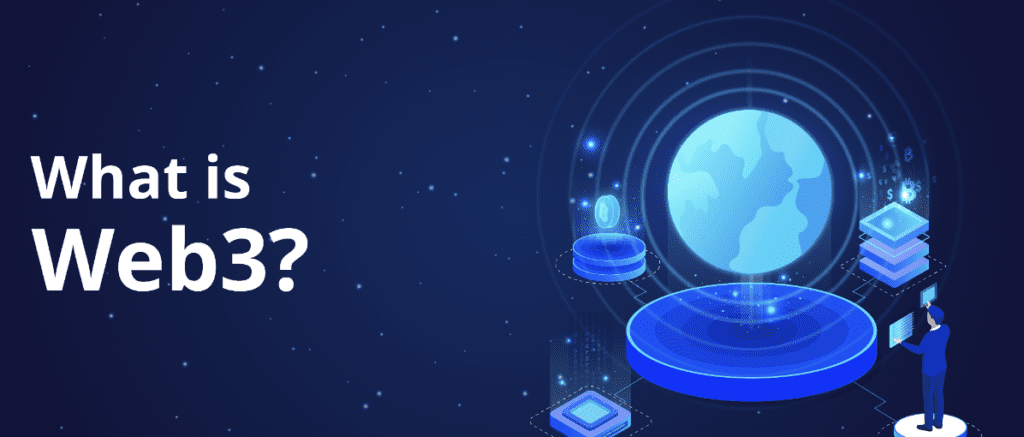Blockchain technology and Web3 are tightly linked, and understanding this link is crucial for anyone who wants to stay up-to-date with the latest developments in technology and the internet.

At its core, blockchain technology is a decentralized ledger that allows for secure and transparent transactions. This makes it ideal for use in Web3 applications, which are designed to be decentralized and user-controlled. Web3 is a term used to describe the next generation of the internet, where data is stored on decentralized networks and users have more control over their data.
One of the key benefits of blockchain technology is that it allows for the creation of smart contracts. These are self-executing contracts that are encoded on the blockchain, and which automatically execute when certain conditions are met. Smart contracts can be used to automate complex transactions, such as the transfer of assets or the payment of royalties, without the need for intermediaries.
Web3 applications can use technology and smart contracts to create decentralized platforms for a variety of purposes, including social media, gaming, finance, and more. These platforms give users more control over their data and interactions, and can be used to create more transparent and equitable systems.
Are blockchain and crypto essential for Web3?

While blockchain and crypto are often associated with Web3, they are not necessarily essential components. Web3 is a broader concept that encompasses the idea of a decentralized web, where users have greater control over their data and interactions online.
Blockchain technology is certainly a key enabler of Web3, as it provides a secure and decentralized platform for transactions and data storage. Smart contracts, which are built on blockchain technology, can also facilitate the creation of decentralized applications that run on Web3 platforms.
However, there are other technologies and approaches that can be used to create Web3 platforms without necessarily relying on blockchain or crypto. For example, peer-to-peer networks, distributed ledgers, and other decentralized technologies can also be used to create Web3 platforms.
Ultimately, the key idea behind Web3 is to create a more user-centric and decentralized web, where users have more control over their data and interactions. While blockchain and crypto can certainly play a role in achieving this vision, they are not the only tools available.
How is Web3 related to blockchain?
Web3 is related to blockchain technology in several ways. Web3 is a term used to describe the next generation of the internet, where data is stored on decentralized networks and users have more control over their data. Blockchain technology is a decentralized ledger that provides a secure and transparent platform for transactions and data storage.
One of the key features of Web3 is its decentralized nature, which means that data is stored on multiple nodes instead of a central server. This is where blockchain comes in as it provides a decentralized platform for storing and managing data. Blockchain technology is secure and transparent, and it allows for the creation of smart contracts, which are self-executing contracts that automatically execute when certain conditions are met. These smart contracts can be used to automate complex transactions, such as the transfer of assets or the payment of royalties, without the need for intermediaries.
Web3 can also leverage blockchain technology to create decentralized applications that run on top of blockchain networks. These applications, also known as dApps, can be used for a variety of purposes, including finance, gaming, social media, and more. By using blockchain technology, these dApps can offer greater transparency, security, and decentralization, which is a key tenet of the Web3 philosophy.
Blockchain technology is a key enabler of Web3, as it provides a secure and decentralized platform for transactions and data storage. By leveraging blockchain technology, Web3 can offer greater transparency, security, and decentralization, which is essential for creating a more user-centric and decentralized web.
How might blockchain propel the expansion of Web3?
Blockchain technology can propel the expansion of Web3 in several ways:
- Decentralization: Blockchain technology enables decentralization, which is a key aspect of Web3. By using blockchain technology, Web3 platforms can offer a decentralized architecture where users have more control over their data and interactions. This can lead to greater privacy and security for users.
- Smart contracts: Smart contracts are self-executing contracts that automatically execute when certain conditions are met. They are built on blockchain technology and can be used to automate complex transactions, such as the transfer of assets or the payment of royalties. Web3 platforms can leverage smart contracts to create decentralized applications that offer greater transparency, security, and automation.
- Tokenization: Blockchain technology enables the creation of digital tokens, which can represent assets such as currencies, stocks, or real estate. Web3 platforms can use tokenization to create new forms of value exchange, such as decentralized finance (DeFi) applications.
- Interoperability: Blockchain technology can enable interoperability between different Web3 platforms. By using blockchain technology, different Web3 platforms can communicate with each other and exchange data and assets in a seamless and secure manner.
Blockchain technology can propel the expansion of Web3 by enabling decentralization, smart contracts, tokenization, and interoperability. These features can help to create a more user-centric and decentralized web, which is the key goal of Web3.
How can companies prepare for a Web3 world?
As Web3 technologies and platforms continue to develop, companies can prepare for a Web3 world in several ways:
- Educate themselves: Companies should stay up-to-date with the latest developments in Web3 technologies, such as blockchain, smart contracts, decentralized finance (DeFi), and non-fungible tokens (NFTs). This can involve attending industry conferences, workshops, and webinars, and engaging with the broader Web3 community.
- Experiment with Web3 applications: Companies can start experimenting with Web3 applications by developing proof-of-concepts or pilots. This can help them understand how these technologies work and how they can be used to create new business models or improve existing ones.
- Embrace decentralization: Web3 technologies are designed to be decentralized, meaning that they operate without the need for a central authority. Companies should embrace this concept by exploring ways to decentralize their operations, such as by using blockchain to store and share data.
- Collaborate with Web3 startups: Many Web3 startups are emerging, creating innovative solutions that leverage blockchain, DeFi, and NFTs. Companies should consider collaborating with these startups to learn more about these technologies and how they can be applied to their own businesses.
- Prepare for new business models: Web3 technologies are enabling new business models, such as the tokenization of assets and the creation of decentralized autonomous organizations (DAOs). Companies should prepare for these new models by exploring how they can be used to create value for their customers and stakeholders.
Companies that are proactive in preparing for a Web3 world are likely to be better positioned to take advantage of the opportunities that these technologies offer.
DISCLAIMER: The Information on this website is provided as general market commentary and does not constitute investment advice. We encourage you to do your own research before investing.
Join us to keep track of news: https://linktr.ee/coincu
Annie
Coincu News





